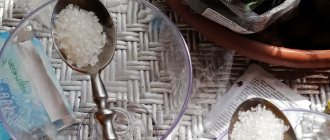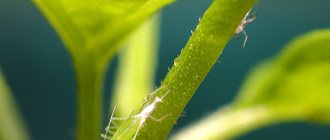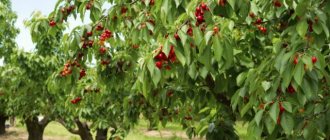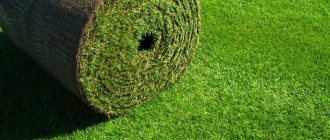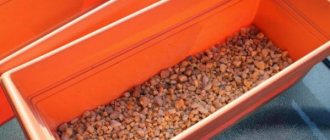All plants, no matter where they are grown, are subject to invasion by various pests. In addition, indoor plants that housewives love to grow are susceptible to various diseases and the harmful effects of various insects. Various reasons contribute to this. Often housewives themselves are to blame for this, since they do not create the proper conditions for growth and development for plants. Some of them simply forget to water the plants, and some of them water them excessively. It should be noted that there are quite dangerous pests that can reduce a person’s work to zero.
As a result of the appearance of pests, indoor plants lag behind in development and lose their attractiveness, and often even die. Therefore, the main task of indoor plant lovers is the timely detection of parasites and subsequent control of them. This article talks about the main pests of indoor plants, their appearance, as well as ways to combat them.
Whitefly
This is an insect with a body length of no more than 2 mm. A characteristic feature is white wings and a yellowish body. They can be found:
- On the back side of the leaves, where they are located in colonies.
- According to characteristic sweetish traces, on which after some time a sooty fungus appears.
Whitefly larvae have a sucking type of mouthparts, so they suck out the juices from the plant. As a result, the plant loses its vitality and gradually loses its attractiveness. If no measures are taken, the plant will soon die.
Interesting fact! When appearing in greenhouses, the whitefly prefers plants such as hibiscus, pelargonium or begonia. After the appearance of just one individual, after a short period of time a whole colony of these insatiable pests appears in the greenhouse. In this regard, the fight should begin immediately.
Saving indoor plants from pests and diseases - Everything will be fine - Issue 282 - 11/05/2013
Signs of pests
What needs to be done to save pets? First of all, find out what harmful insects have infested the flowers. To do this, a thorough examination of the plant itself and the soil is carried out. After this, they begin a merciless fight using various methods. Remember, any delay is fraught with disastrous consequences.
Insects live in the soil (on roots), on leaves, stems, and gnaw buds.
Plants react to each pest in a special way: they can change the color of leaves and slow down their growth. When visually examining a houseplant, you can notice changes in the leaves and stems.
White spots
White spots are a signal of the appearance of:
- Mealybug or rootbug. You need to examine all parts of the flower. If you notice “cotton” lumps, it means there is a pest.
- When whiteflies appear, the leaves become sticky and may fall off.
- The presence of a red spider (clover) mite can be determined by the whitish mesh, spider mite by the cobweb. Leaves with a large number of insects die off.
Yellow spots
If yellow spots appear on the leaves, you need to inspect the leaves. If fingers stick to them, these are marks left by scale insects. The cause may be the appearance of enchytraea. Tiny white worms live in the soil right at the root.
If you notice the presence of brown, brownish spots on the bottom of the leaf and white smudges on top, this indicates the action of thrips.
Deformation of foliage and stems
If the shoots and leaves on the flowers begin to deform, it means that the flower is affected by aphids or cyclamen mites. Aphids leave behind sticky residues. It sucks the juice from indoor plants, which can cause them to dry out. If dust appears on the leaves below, they curl—the mite is in charge.
The cause of drooping leaves and shoots is fungus gnats, leaf or root-knot nematodes.
Aphid
These are also harmful insects that suck juices from plants due to the presence of piercing-sucking mouthparts. Insects have an ovoid body shape, no more than 2 mm in length. Aphids have rather long legs, but they move rather slowly. The color of insects depends on the species, as well as on living conditions, so it can be varied.
There are both winged and wingless types of insects. Naturally, insects with wings can easily enter a person’s home, even through an open window.
Prevention measures
The condition of the orchid must be monitored from the moment of its purchase. This will protect the flower from harmful insects.
- When purchasing, carefully inspect the plant.
- From time to time, inspect for spider webs with spots.
- Provide diffuse lighting for 12 hours a day.
- Regular spraying in the morning prevents waterlogging and drying out of the soil.
- Use settled water at room temperature for irrigation.
- Monitor the temperature: during the day the recommended value is 22-27 degrees, and at night – 15-20 degrees.
- Do not neglect the timely application of complex fertilizing.
- For replanting, use a soil mixture prepared by yourself, disinfect it by freezing or roasting in the oven.
Hairy aphid
This type of aphid is also called mealybugs. They are one of the most dangerous insects for plants. As a rule, they can be found on the underside of leaves. Their presence is indicated by a cobweb-like white coating, as well as the presence of a sticky liquid.
These insects are distinguished by a high degree of fertility. Female mealybugs lay eggs in miniature formations that resemble balls of cotton wool. After a certain time, fairly mobile larvae emerge from these lumps, which are then distributed throughout the plant. Fighting them requires an instant reaction. The sooner you start fighting this pest, the greater the chance of saving the plant.
Mealybug is a pest of domestic flowers. Signs of infection, methods of control
Garlic
Strong antibacterial agent. Its smell cannot be tolerated by insects. If you are not afraid of a specific aroma, water your indoor flowers with garlic infusion.
Garlic destroys mold spores, prevents plant diseases and repels all insects. It is necessary to chop 7-10 cloves of garlic, pour a liter of boiling water over them and leave for at least a week.
Strain the resulting concentrate, measure out 50 g and stir in 10 liters of water. This solution can be used to both water and spray plants.
A simpler, but less effective way is to put a few cut cloves in a flower pot.
Advantages of using garlic: getting rid of pests, preventing plant diseases and saturating the soil with useful substances. The disadvantages include a pungent odor, the duration of preparation of the infusion and its short shelf life.
Root mealybug
This type of pest poses the main threat to the root system of plants. The parasite can be detected either in the ground or on the lower part of the plant stems, by a whitish coating. Females reach a length of up to 2.5 mm, while they are larger than males and much more mobile. Pests are distinguished by their almost cylindrical body shape, covered with a waxy coating. Females lay eggs in special chambers formed by special secretions.
Males are more like whiteflies. As adults, they quickly die because they stop feeding. Therefore, females make up the main population of these pest colonies.
It is important to know! The presence of such insects on indoor plants leads to the fact that the plants lose their attractive appearance. In addition, damaged plants begin to suffer from fungal diseases.
Caterpillars
Caterpillars are small worms with a body length of up to 2 cm. The larvae are variegated or monochromatic in color. They feed on the fleshy part of the green mass; some representatives wrap the leaf in a silk thread. The appearance of caterpillars is fraught with damage to the plant’s immunity. It weakens and can be susceptible to various diseases.
Pests can be found on cyclamen, balsam or geranium. You can protect the plant from the caterpillar by treating the foliage with a soap solution and then washing it with hot water.
Shchitovka
Scale insects also appear on house plants, and each type of scale insect can infect a specific type of plant. The palm scale insect parasitizes the shoots of palm trees. There are also cactus, pink, ivy, Californian, laurel, and oleander scale insects. Often scale insects appear on lemons or orchids. A characteristic feature of these pests is the shell that protects their body. In this regard, it is quite difficult to fight scale insects.
The false scale insect, which does not have a waxy shell, poses a huge danger to plants. The females of these pests grow up to 5 mm in length, and they have neither legs nor wings, unlike males. Females are distinguished by the fact that their body is covered with a convex shield, which can have different shapes, both round and oval.
These parasites prefer to be found on any part of the plant, both on the stems and on the back of the leaves. There is also a hemispherical scale insect, which is slightly larger in size and volume. Plants such as ferns, asparagus and myrtle are affected by these pests. Below is the appearance of some pests of indoor plants.
Fighting scale insects (pests of indoor plants). Part 1
Types of insects
All insect pests of indoor flowers can be divided into three types according to the type of their feeding - these are plants that suck sap, chew leaves and attack roots. Of course, all types are dangerous, but the most insidious of them are those that wear away the roots of plants, since you may not immediately understand what exactly the problem is, and you may miss the time during which the flower could be saved. Parasites that feed on plant sap or chew leaves can be noticed sooner and, accordingly, all necessary measures can be taken to save the plants.
So, the most numerous representatives of sucking insects are aphids, scale insects, spider mites, thrips, whiteflies, and scale insects.
Aphids - these well-known small insects settle in colonies mainly on the upper shoots and in the axils of the leaves. They are easy to treat, but they multiply again very quickly. There are winged and wingless species, they have different colors from dark brown to green. They feed on cell sap. Due to their high gluttony, they can quickly destroy the plant.
Insects gnawing leaves and shoots: springtails, fools, weevils.
- Springtails and springtails belong to the springtail group, which live in damp soil and feed on organic matter. This is a wingless type of arthropod, usually white or another light shade, that moves by jumping using a strong elastic tail. They eat the above-ground parts of the plant, rotting from excessive dampness.
- The weevil is one of the especially dangerous pests that eats not only plant matter, but also roots and seeds. This coleopterous insect has a characteristic elongated head with a proboscis. With the help of this proboscis, the bugs not only feed, but also drill deep holes in plant tissue in order to lay eggs, causing irreparable damage.
Parasites that attack the root system: nematodes, enchytraea, sciarids and others.
Root bugs are white, small, cylindrical bugs that live in the ground. They prefer light soils that dry out quickly and usually settle on the roots. The affected plant becomes noticeably lethargic and does not rise even when watered.
White fool
White podurs are hopping insects that can be found in potted houseplants. They differ:
- An elongated body on which sparse hairs grow.
- Having 3 pairs of legs.
- Having a long mustache.
- Prefers moist conditions.
The diet of these pests includes the remains of plant components, as well as a living root system. If you do not pay attention to these parasites in time and do not destroy them, they can lead to the death of indoor plants.
woodlouse
Indoor plants can be attacked by an insect pest called Woodlice, which has an oval-shaped body with a small bulge at the top (the photo will help you recognize the insect on the crop). The parasite belongs to the family Crustaceans and Isopods.
Eats plant roots, fresh rotted organic matter, underground shoots and soft tissues of crops located near the surface of the substrate. Loves dark and warm conditions. The insect emerges from its hiding places at night. Since it leads a hidden lifestyle and is small in size, it can cause significant damage to the flower.
The pest can be recognized by lesions in the form of holes or pits in the soft parts of the flower. Appears on cacti, ferns and orchids.
For prevention, you should constantly remove any remaining vegetation in the container. To prevent wood lice from getting on the crop, containers must be placed on a pallet.
The fight against woodlice is based on the use of a drug called Pyrethrum, since insecticides have practically no effect on the insect. Another means of control is traps. One of them can be created from a potato, cleaning it from the inside and placing it next to the plant in a pot. Over time, all the insects will accumulate inside the trap and can be removed.
Spider mite
Many indoor plant lovers are familiar with this common and quite dangerous pest. This is a tiny insect that can only be detected with a magnifying glass. Colonies of these insects are found on the underside of leaves. Spider mites prefer warm and dry air. Under such conditions, the insect reproduces at a tremendous rate.
You can determine that a plant is infected with spider mites:
- By light spots that are visible in places where pests live.
- By the presence of the finest cobwebs that cover plants.
Chinese roses, geraniums and palm trees suffer quite a lot from the invasion of spider mites, which suck the juices out of them.
Useful tips
Experienced gardeners advise how to prevent or prevent pests from infecting indoor plants:
- A new plant purchased may be infested but appear healthy, and symptoms may appear later when the pests have multiplied. It needs to be placed separately from the others and observed for some time.
- Inspect the plants. If harmful insects are found on any of them, it is isolated from others and treatment is started immediately.
- Before planting, the soil can be calcined in the oven or frozen to destroy the larvae or eggs of harmful insects.
- If there are not many pests on the plant, you can use folk remedies. If the damage is severe, it is better to immediately use chemicals.
- Follow the rules of care: watering, fertilizing.
Thrips
These are insects whose length does not exceed 1.5 mm. Pests can be identified by their black or dark brown body color, with the lower part of the body being a reddish-yellow hue. Like most pests, thrips hide on the underside of leaves. The female lays eggs in very small holes, which she gnaws in the leaves and also in flower buds.
It is important to know! The appearance of a silver pattern on indoor plants indicates that the plants are infected with thrips. These are traces of their life activity.
TRIPS on indoor flowers | PESTS of indoor plants and their control
Nematodes
These are 3 groups of white round small worms that live in different parts of tropical flowers:
Root
Parasites attach themselves to roots, destroying them, and can live there for many years, waiting for suitable conditions. Plants wither, do not grow, flowers become smaller, branches become deformed.
Leafy
Millimeter earthworms. When they appear on the leaves, greenish, quickly darkening spots are observed. Plant buds do not develop, young shoots, stem tips and buds dry out. These individuals spread through contaminated water.
To prevent the entry of these almost incurable pests, the soil is disinfected at temperatures above 50 degrees for 10 minutes or by treating it with 10% formaldehyde, washing it off only after a couple of hours. Garden tools and flower containers are also disinfected.
There are no effective measures against these dangerous pests. Weakly affected plants are treated with Dekaris (a tablet dissolves in a liter of liquid) or Heterophos. Neglected flowers and the soil from them are destroyed.
Fungus gnats (sciarids)
These insects are also called scyriads. These are not large flies, up to half a centimeter long, that fly around indoor plants. Sexually mature individuals carry the larvae of various pests, which infect plants. The scyriads themselves lay eggs in the root system of plants, which causes great harm to the plants, since white larvae emerge from the eggs and feed on the root system. The result of their vital activity is dead indoor plants.
Mining flies
Mining flies are presented in the form of small insects with transparent gray wings and a body length of up to 3 mm. They lay translucent, whitish or yellowish eggs on the underside of foliage. Generation duration ranges from 20 to 35 days.
Harm to the plant is caused when its tissue is pierced by drinking the juice. The pest can be found on chrysanthemums and violets. If masonry is detected, the affected leaf will need to be removed and the plant treated with one of the following preparations: “Karbofos”, “Aktellik”, “Aktara”, “Tanrek”, “Apache”.
Control measures
How to get rid of pests? This question haunts many indoor plant lovers. Pest control can be done in a variety of ways. For example:
- Mechanical.
- With the help of biological drugs.
- Using chemical control agents.
- Based on folk recipes.
Pests of indoor plants and their control, plant protection, how to get rid of them
Mechanical method
This is an environmentally friendly, simple and affordable way to combat parasites on your own. To do this, you need to take a tool, preferably disinfected, and cut off the damaged parts of the plants. It is better to treat the cut areas with activated carbon. Pests that can be seen with the naked eye can be picked out with your hands without any problems, unless there are so many plants and pests.
Interesting recipe! A contrast shower will help rid indoor plants of parasites. It is enough to spray the flower with water and then wipe the leaves with a cotton swab and the problem can be solved.
Folk remedies
To protect them from various insects, as well as in cases of their diseases, many lovers of indoor plants prefer folk remedies. These products have been tested for many decades, so there is no doubt about their effectiveness. Decoctions prepared from plants such as chamomile, nettle, yarrow, dandelion or marigold are absolutely harmless to humans and plants. Solutions prepared with garlic and onions have the same effect. The prepared solutions are simply sprayed on the plants almost every day.
As an option, you can use citrus peels, which should simply be buried in the ground. The smell of these components cannot be tolerated by many parasites that want to settle on indoor plants.
Solutions based on wood ash, furatsillin, soda or potassium permanganate work no less effectively in this direction. You just need to prepare the solution correctly, after which the plants are sprayed with a spray bottle.
It is important to know! If you add a little soap, preferably laundry soap, to the solutions, the product will not drain from the leaves so quickly, which will enhance the effect of using the product.
Biological method
Biological preparations differ in that they act only on certain types of pests and are safe for humans and pets. Despite this, the working composition must be prepared correctly and used correctly. For example:
- The solution is prepared strictly according to the instructions.
- After treatment, the plant should dry.
- The room needs to be well ventilated.
For such purposes, you can use control agents such as Agrovertin, Fitoverm or Iskra-Bio.
Insecticidal preparations
Insecticides of contact and systemic spectrum are effective means of controlling pests of plants and flowers. Since their range is quite large, a number of features of some should be considered.
Many gardeners try to avoid the unnecessary use of chemicals due to their toxicity. In fact, they are dangerous only for pests, and not for humans. The degree of toxicity of any composition is determined by the LD50 level, which determines the maximum amount of a substance required to be consumed or inhaled to cause death.
Insecticides against harmful insects, in most cases, are low-toxic and safe for people. They contain only substances harmful to insects. The lethal dosage for humans usually exceeds several hundred grams.
You should not focus on the smell, as most chemicals have a strong and unpleasant smell. Modern drugs are produced without fragrance, but do not lose their effectiveness in killing pests. When choosing a drug for exterminating plant insects, it is better to use different groups in turn: organophosphorus, neonicotinoid, pyrethroid. This technique helps prevent the development of immunity in insects.
Today, an expanded selection of insecticides is available for sale. The most popular drug is "Aktara", endowed with a wide range of damaging effects on plant pests and absolutely harmless to surrounding people.
Available in the form of microencapsulated water-soluble granules. The aqueous solution obtained from them does not emit an unpleasant odor. The advantage of the product is that it is systemic - after application to the plant it accumulates in the tissues for a long period of time, providing protection against parasites for at least 2 weeks.
Progressive chemicals include Apache, which is similar in composition to Aktara. The product is more economical to use.
List of modern chemicals:
- Pegasus;
- Rogor;
- Talstar;
- Fury;
- Arrivo;
- Cypermethrin;
- Talstar.
Biological drugs include:
- Verticillin;
- Mikoafidin.
To help gardeners, there are various sticky traps that are placed near the affected plantings.
No less common in home use are herbal products that have insecticidal and acaricidal effects. These include infusions: red pepper, onion, garlic, tobacco. They are effective against: aphids, scale insects, thrips, mites.


